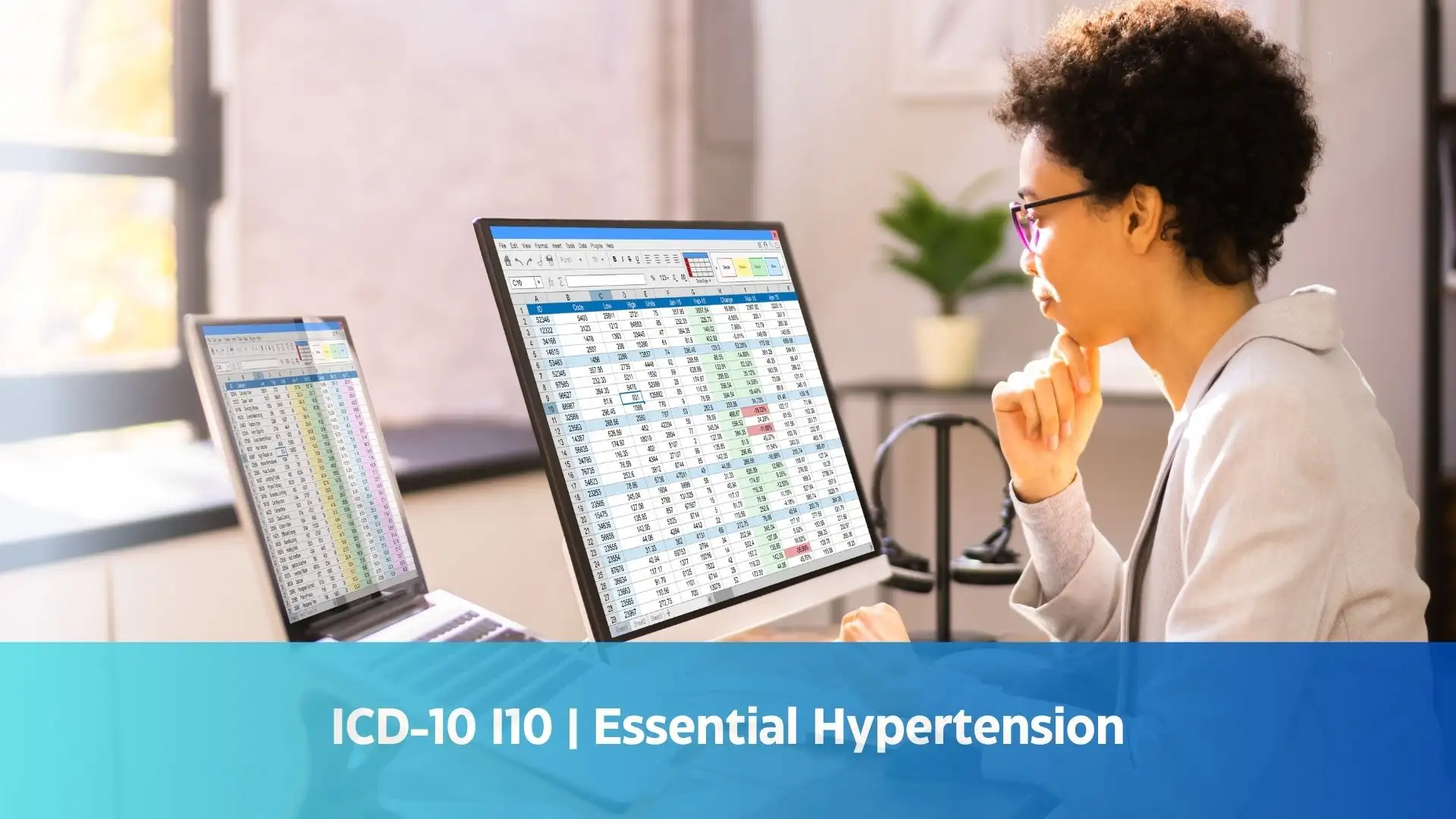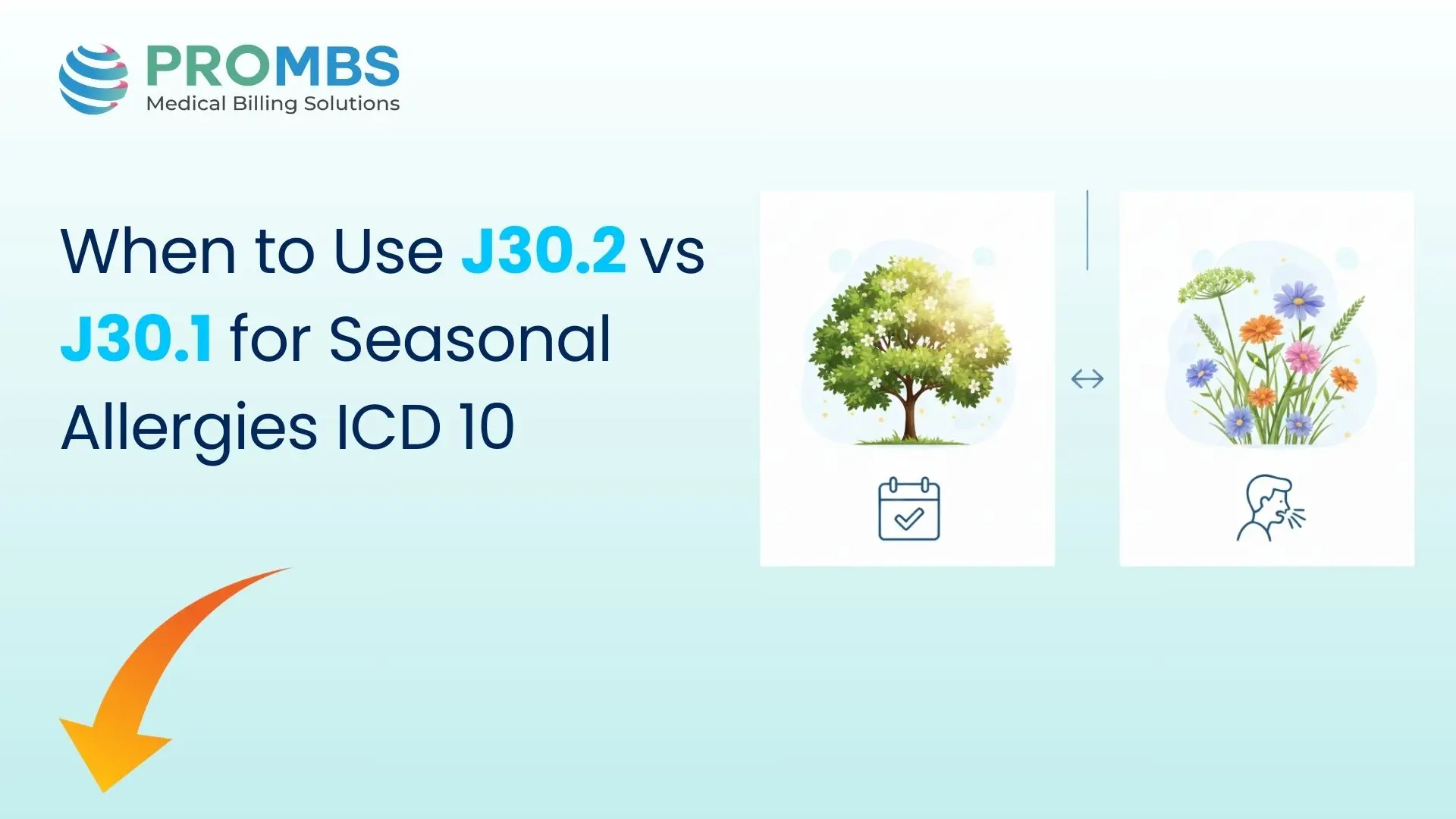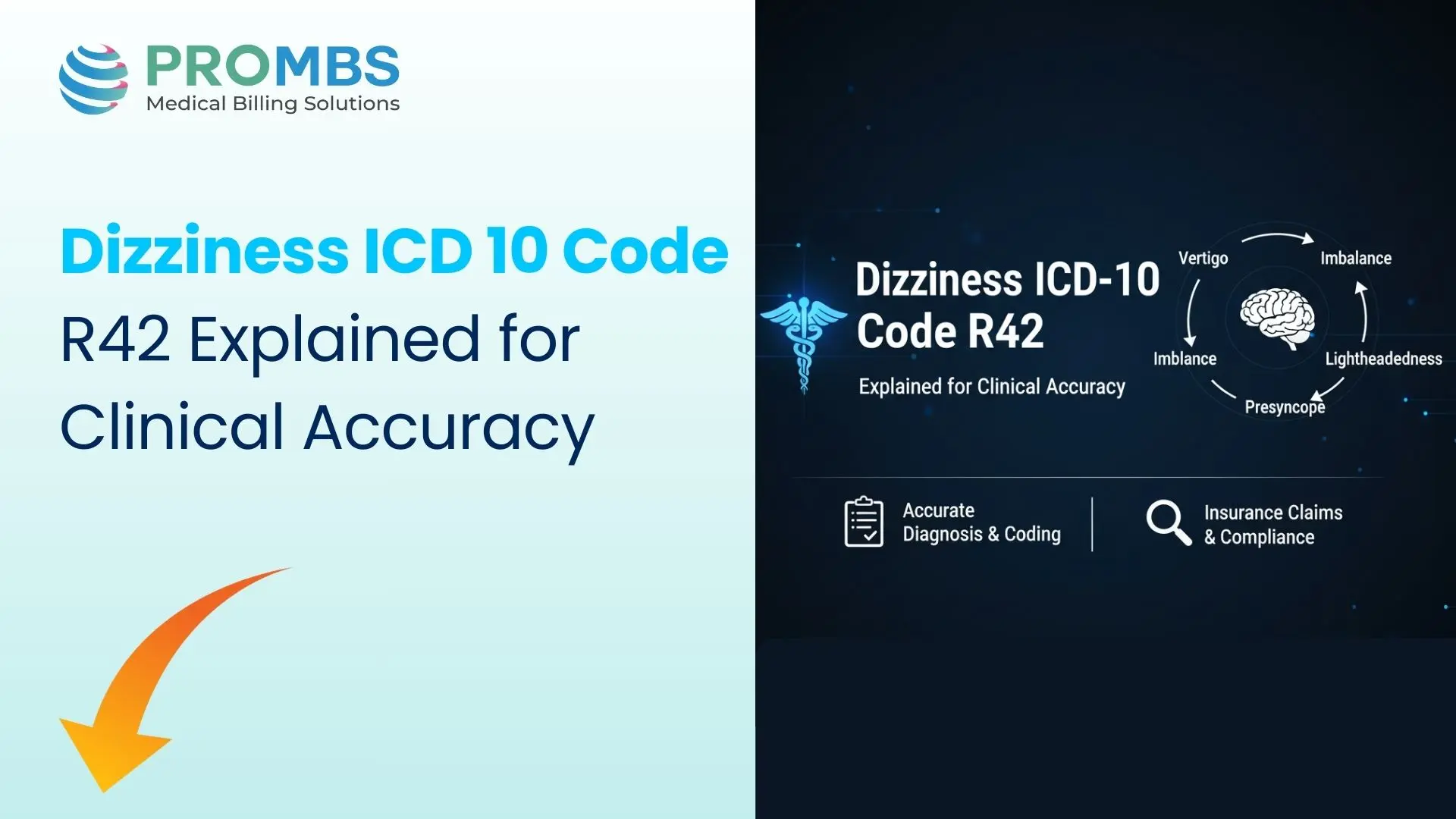Hypertension is one of the most commonly treated chronic conditions in the U.S., and the ICD-10 code I10 is used millions of times each year to document it. But billing it incorrectly can result in denied claims, delayed payments, and frustrating resubmissions.
Whether you're a physician, coder, or billing specialist, understanding how to use I10 accurately is key to reducing denials and improving clean claim rates.
In this blog, you'll learn:
- What ICD-10 Code I10 represents and when to use it
- Documentation and diagnosis linking best practices
- Common payer denial reasons with fixes
- How to structure a claim using I10
- Which codes to use when hypertension coexists with CKD, heart failure, or diabetes
What Is the ICD-10 Code for Essential Hypertension?
The ICD-10 Code I10 refers to essential (primary) hypertension, which is high blood pressure not caused by another disease. It is the standard diagnosis code used in most adult outpatient visits where high blood pressure is being monitored or treated.
Unlike secondary hypertension, which is linked to another underlying condition like kidney disease or hormonal disorders, essential hypertension has no identifiable cause but is still managed with medications, lifestyle changes, or both.
When to Bill Hypertension ICD-10 Code I10 and When Not To
The ICD-10 Code I10 should only be billed when essential hypertension is a confirmed, actively managed condition. This means the provider has established the diagnosis based on clinical findings and is either monitoring or treating the patient with a documented care plan.
Bill I10 When:
- The patient has a confirmed diagnosis of essential (primary) hypertension.
- The visit includes blood pressure monitoring, medication management, or lifestyle counseling.
- The provider’s documentation supports medical necessity and shows active clinical decision-making.
- The encounter is related to ongoing management, not just incidental findings.
Do Not Bill I10 When:
The patient has elevated blood pressure without a formal diagnosis.
- Use R03.0 (Elevated blood pressure reading without diagnosis of hypertension).
The visit is for screening purposes only with no established diagnosis.
- Use Z13.6 (Encounter for screening for cardiovascular disorders).
The blood pressure finding is incidental or transient, such as white coat hypertension.
- Use Z01.89 (Other specified special examinations) or leave undocumented if clinically insignificant.
Billing Frequency:
You can bill I10 as often as medically necessary, but each visit must show:
- Why the patient returned.
- What was done during the visit (e.g., medication adjustment, lab review).
- That it is not a duplicate or generic follow-up without clinical value
Proper Documentation for Essential Hypertension I10
Accurate documentation is the foundation of a successful claim when using the ICD-10 Code I10. Your records should clearly show that the patient has a confirmed diagnosis of essential hypertension and that the condition is being monitored or actively treated. Moreover, there must be a clear medical reason tied to the office visit. To meet these standards, the provider’s note should include current blood pressure readings, any medications being used to control blood pressure, relevant lifestyle recommendations, and any lab tests or diagnostics related to hypertension management. The more precise and thorough the documentation, the better your chances of a claim being accepted without issues.
Many I10 claim denials don’t stem from the absence of a hypertension diagnosis, but from incomplete or vague documentation. Payers often reject claims when linked conditions like CKD or heart failure are missing, or when the note lacks blood pressure readings, treatment plans, or medication reviews. Mismatches between provider notes and submitted codes can also trigger red flags during payer audits.
ICD-10 Diagnosis Code for Hypertension (I10)
Essential hypertension often appears alongside other conditions. When these comorbidities are present, it’s important to use the correct linked diagnosis codes to provide full clinical context. Here are some common examples:
Hypertension with Chronic Kidney Disease (CKD)
If the patient has both hypertension and CKD, don’t use I10 alone. Instead, use the combined code I12.9 (hypertensive CKD, stage 1 through 4) along with a code that reflects the stage of CKD, such as N18.3 for stage 3.
Hypertension with Heart Failure
When hypertension coexists with heart failure, use I11.0 (hypertensive heart disease with heart failure) and also add the specific type of heart failure, like I50.9 (heart failure, unspecified).
Hypertension with Both CKD and Heart Failure
If both CKD and heart failure are present, use I13.0 (hypertensive heart and CKD with heart failure and stage 1-4 CKD), plus a CKD stage code and a heart failure code.
Hypertension with Diabetes
Although diabetes is not directly linked to hypertension in the code set, it’s frequently seen together in real cases. In these instances, include both E11.9 (Type 2 diabetes without complications) and I10, if no other complications exist. You can also read the complete guide on E11.9 ICD-10 Billing Guide 2025 for Type 2 Diabetes to dive deeper into accurate coding and documentation.
Using these combined codes paints a fuller picture of the patient’s condition and helps the payer understand the need for treatment.
Step-by-Step Billing Guide for ICD-10 Code I10
To successfully bill for essential hypertension using ICD-10 Code I10, your claim must be built on accurate documentation, correct code selection, and payer-compliant submission practices. Below is a simplified, step-by-step billing guide to ensure clean claims and faster reimbursements.
Step 1: Confirm Diagnosis and Medical Necessity
Ensure the provider has clearly documented:
- A formal diagnosis of essential hypertension
- Current blood pressure readings
- Any medication adjustments, lifestyle counseling, or lab orders
- A clear reason for the visit tied to active management
Step 2: Select the Appropriate ICD-10 Code
- Use I10 if the patient has only essential hypertension with no heart or kidney involvement.
- Use combination codes like I11.0, I12.9, or I13.0 if heart failure or CKD is also present.
- Add secondary diagnosis codes when applicable (e.g., Z79.899 for long-term drug therapy, E11.9 for Type 2 diabetes).
Step 3: Choose the Correct CPT Code
- Select the appropriate E/M code based on visit complexity and time:
- 99212 – 99215 for established patients
- 99203 – 99205 for new patients
- Add additional procedure codes if labs or screenings were done (e.g., 36415 for venipuncture).
Step 4: Link Diagnosis to Procedure Codes
In your billing software:
- Link I10 (or combination code) to the E/M code to justify medical necessity.
- For multiple codes, use the primary diagnosis that most directly supports the billed service.
Step 5: Include Supporting Z-Codes When Relevant
- Use Z79.899 when the patient is on long-term antihypertensive medications.
- Add Z00.00 for annual exams if hypertension was addressed during the preventive visit.
- Include Z68.x for BMI if obesity counseling was done.
Step 6: Verify Enrollment and Provider Status
Before submitting:
- Confirm the rendering provider is credentialed and actively enrolled with the payer.
- Verify NPI, TIN, and group affiliations are correctly listed on the claim.
Step 7: Submit via Clearinghouse With Payer Edits Enabled
- Use electronic submission tools that apply payer-specific edits to catch errors before the claim reaches the insurance company.
- Check for required modifiers (e.g., -25 for E/M with same-day procedures, if applicable).
- Confirm payer receipt and track claim status using ERA/EOB feedback.
Proper Claim Setup Using ICD-10 Code I10
| Claim Element | Example |
|---|---|
| Primary Diagnosis | I10 (Essential hypertension) |
| Secondary Diagnosis | Z79.899 (Long-term drug therapy), E11.9, etc. |
| CPT Code | 99213 (Office visit, established patient) |
| Claim Note | Patient presents for HTN follow-up. BP 150/95. Lisinopril adjusted. Advised DASH diet. |
How to Prevent I10 Claim Denials
Avoiding denials when billing for essential hypertension involves a few critical practices. Always keep the documentation up to date at each patient visit, clearly reflecting the current status of the patient’s hypertension and any treatments being provided.
Below is a breakdown of the most common denial codes tied to I10 along with what you can do to correct and resubmit them:
| Denial Code | Denial Reason | How to Fix |
|---|---|---|
| CO-50 | Service not medically necessary | Add BP readings, treatment plan, and revisit purpose |
| M76 | Inappropriate code for condition | Use I11, I12, or I13 if comorbidities are present |
| MA13 | Missing documentation | Include labs, vitals, medication list, and full visit notes |
| CO-16 | Missing or incomplete claim info | Review diagnosis links, NPI, CPT codes, and modifiers |
| PR-49 | Provider not enrolled or eligible | Verify Medicare or payer enrollment is active |
Conclusion
Billing for essential hypertension using the ICD-10 Code I10 may seem straightforward, but getting it wrong can lead to avoidable denials. Always ensure your documentation supports the diagnosis, add linked codes for related conditions, and connect services to the diagnosis.
Understanding how to set up claims correctly, especially when other chronic conditions are involved, not only improves your reimbursement success but also reflects higher-quality care.
Take time to review payer-specific guidelines, keep coding references up to date, and educate your team regularly. When used accurately, I10 becomes more than just a diagnosis it tells a complete story of patient care. Ready to strengthen your coding and compliance strategy? Get a free consultation with Pro-MBS today and let our experts help you stay ahead of audits, denials, and documentation errors.



